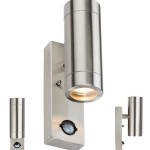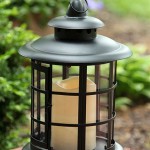How to Take Great Outdoor Photos
Capturing the beauty of the natural world through photography is a rewarding endeavor. Whether you're an experienced photographer or just starting out, improving your outdoor photography skills can elevate your images. Achieving stunning outdoor photos requires a combination of technical knowledge, creative vision, and understanding of the elements. This article will delve into essential tips and techniques to help you take your outdoor photography to the next level.
Understanding Light and Composition
The foundation of great outdoor photography lies in understanding and harnessing light. Natural light is constantly changing, casting different shadows and highlighting textures throughout the day. The "golden hour," the hour after sunrise and the hour before sunset, offers soft, warm light that illuminates subjects beautifully, creating a sense of depth and richness.
Composition is equally crucial. The rule of thirds, a fundamental principle in photography, divides the frame into nine equal sections with four intersecting points. Placing points of interest at these intersections creates a balanced and visually appealing composition. Leading lines, such as winding paths, rivers, or fences, can draw the viewer's eye into the image and provide depth. Experiment with different angles, perspectives, and framing to find the most compelling compositions.
Mastering Exposure and Focus
Exposure is the amount of light that reaches the camera sensor, influencing the image's brightness and contrast. Proper exposure is essential for capturing accurate colors and detail. An overexposed image is too bright, while an underexposed image is too dark. Learn to adjust your camera's aperture, shutter speed, and ISO to control exposure and achieve a well-balanced image.
Focus is equally critical for capturing sharp and detailed images. In outdoor settings, it's often a challenge to maintain accurate focus, particularly when shooting moving subjects or in low light. Practice focusing techniques, including autofocus and manual focus. The choice between aperture-priority or shutter-priority modes can also influence the depth of field and sharpness.
Embracing the Elements
Outdoor photography offers unique challenges and opportunities. Weather plays a significant role in shaping the landscape and creating atmospheric effects. Embrace rainy days for moody and dramatic skies, or use a polarizing filter to cut down on reflections and enhance the colors in a blue sky.
Wind can add movement to scenes, but it can also be challenging to control. Use a tripod or a sturdy base to stabilize your camera during windy conditions. Even a slight breeze can cause blur in your images, especially when using longer shutter speeds. Understanding the impact of the elements allows you to adapt your approach and capture the essence of the outdoor environment.
Capturing the Essence of the Outdoors
Good outdoor photography goes beyond technical mastery. It requires an eye for detail, a sense of composition, and the ability to capture the spirit of the landscape. Look for patterns, textures, and colors that tell a story. Consider the mood you want to convey and how your chosen elements contribute to that feeling.
Whether you're photographing towering mountains, serene lakes, or bustling city parks, each location has a unique character. Take your time, observe the environment, and let your creativity guide you. Experiment with different angles, perspectives, and focal lengths to find the most compelling ways to capture the beauty of the outdoors.
Conclusion
With a solid understanding of light, composition, exposure, focus, and the elements, you can take your outdoor photography to new heights. Embrace experimentation, observe your surroundings, and let your creativity guide you to capture stunning images that reflect the beauty and wonder of the natural world.

How To Take Great Outdoor Photographs Canvasprints Com

How To Take Great Portraits Outdoors

How To Take Great Before After Photos Of Your Outdoor Project Black Diamond Coatings

Take Great Outdoor Photos Tips By Chris Burkard

How To Take Great Photographs Word On The Streetscape

How To Take Great Portraits Outdoors Using Flash

Here S How To Take Great Outdoor Portraits In Bad Light Shutterbug

Light How To Take Great Photos

How To Take Great Portraits Outdoors

How To Take Great Photos Of Your Outdoor Projects
Related Posts







